Optimize Product Development with Teamcenter
Make your manufacturing and Engineering-to-Order projects smoother with Siemens Teamcenter. Teamcenter helps you work better together, cut costs, and scale as your needs change.

The CLEVR way: From vision to value
At CLEVR, we don’t just implement technology—we enable transformation. Our approach ensures that companies don’t just digitize but truly evolve by embedding Low Code, PLM, and MOM solutions in a structured, scalable way.
Key NX Features

Integrated Design, Simulation, and Manufacturing
Combine all aspects of product development into a single environment, reducing design iterations and accelerating time-to-market.
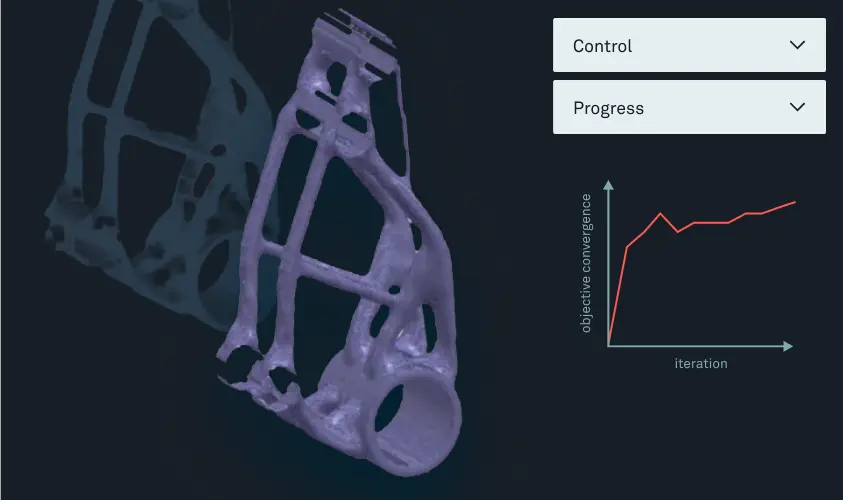
Integrated Design, Simulation, and Manufacturing
Combine all aspects of product development into a single environment, reducing design iterations and accelerating time-to-market.
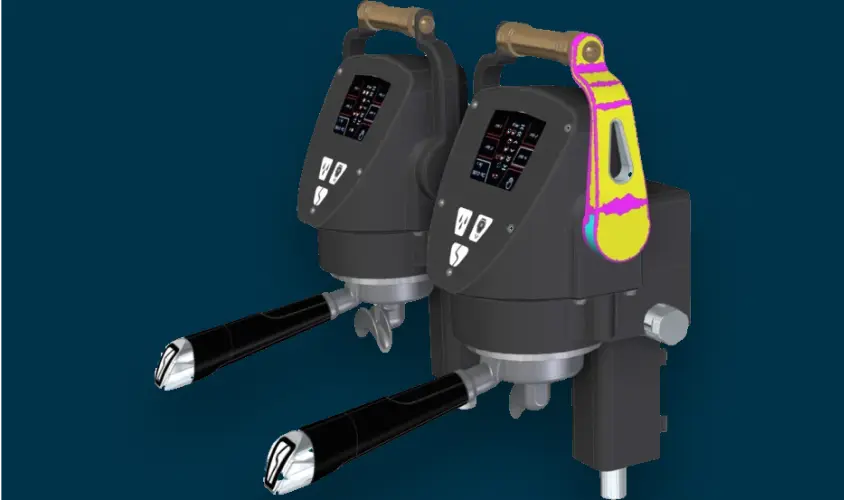
Integrated Design, Simulation, and Manufacturing
Combine all aspects of product development into a single environment, reducing design iterations and accelerating time-to-market.
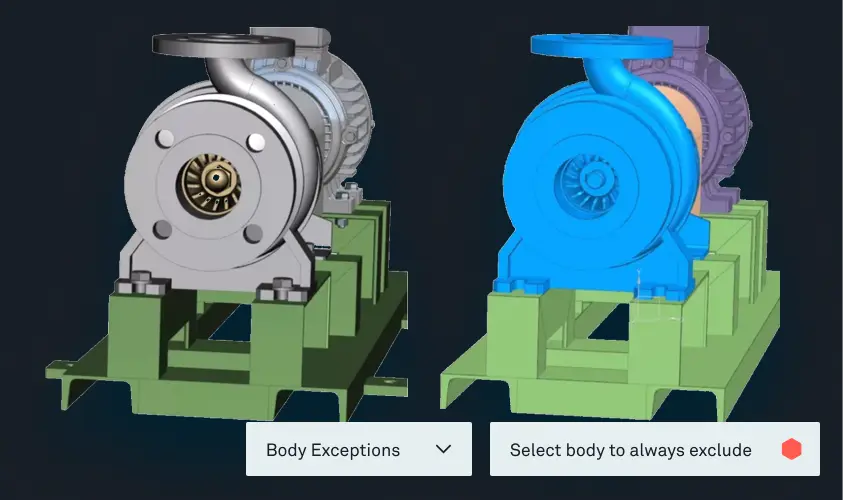
Integrated Design, Simulation, and Manufacturing
Combine all aspects of product development into a single environment, reducing design iterations and accelerating time-to-market.
Why CLEVR?
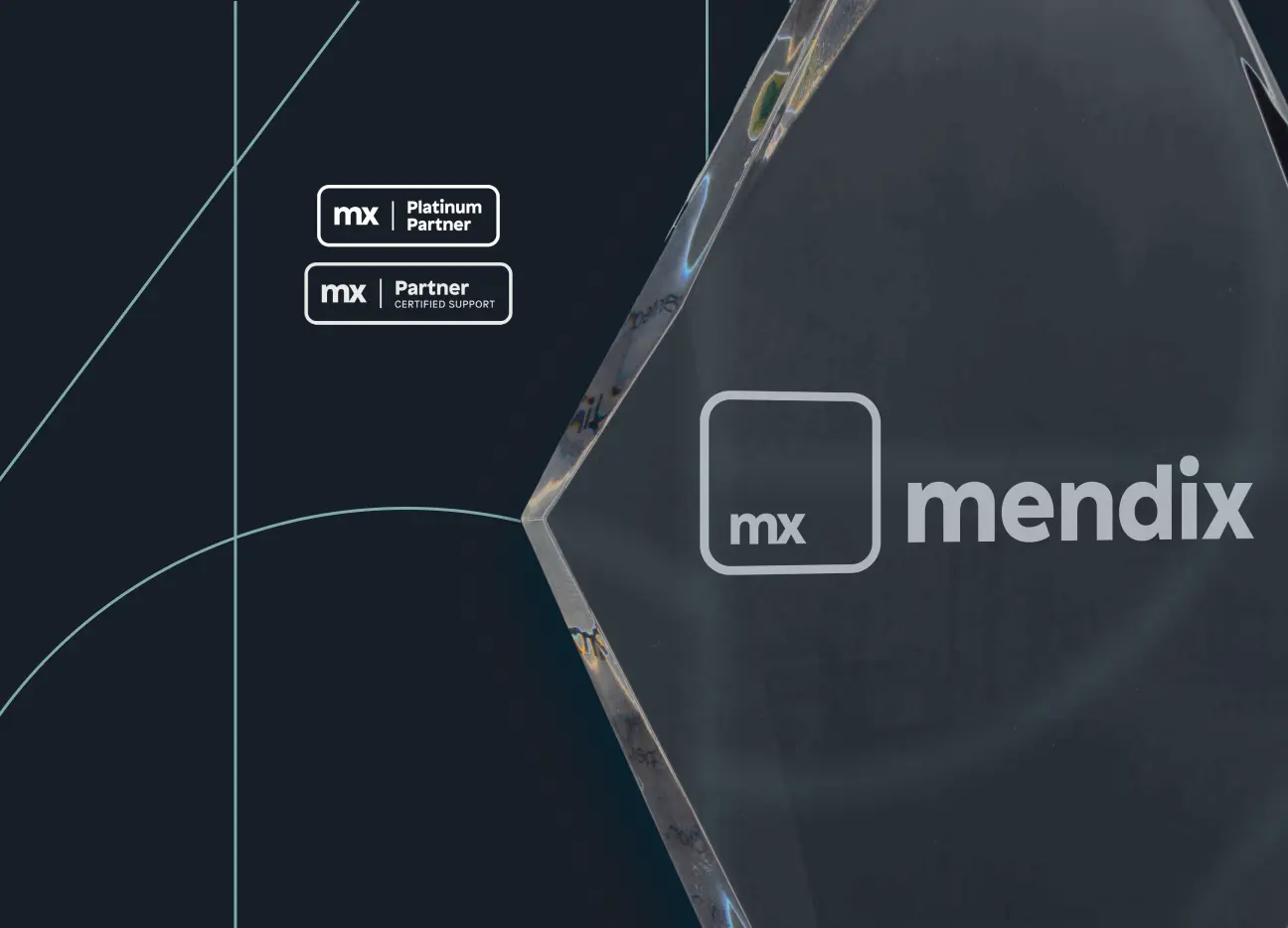
- Proven Expertise: 20 years of low code experience, 3,500+ applications delivered.
- Tailored Solutions: A unique "Vision to Value" methodology ensuring measurable results.
- Global Recognition: Mendix Platinum Partner, awarded Best BNL Partner 2024.
- Customer Satisfaction: Score of 8.8 out of 10, reflecting our commitment to excellence.
- Certified Professionals: The largest team of Mendix expert developers and MVPs.
- Proven Expertise: 20 years of low code experience, 3,500+ applications delivered.
Compare licensing plans
Advanced
Create and edit designs of typical 3D parts and assemblies and more with NX X Design Standard.
Standard
Create and edit designs of typical 3D parts and assemblies and more with NX X Design Standard.
Premium
Create and edit designs of typical 3D parts and assemblies and more with NX X Design Standard.
Verhalen van onze klanten
Bekijk hoe bedrijven zoals het uwe veranderen met CLEVR.
CLEVR suggested some new ways we could use Teamcenter that we hadn't seen before



Mendix allows us to rapidly adapt to new legal demands and security updates.



I think we build tomorrow together in different ways. We try to build the future by providing equipment to produce green hydrogen to enable the green transition, and CLEVR with the information technology will help us to do that efficiently




Find out how CLEVR can drive impact for your business
We try to build the future by providing equipment to produce green hydrogen to enable the green transition.
Related Resources

Waarom lucht- en ruimtevaart en defensie PLM nodig heeft in 2026 - Siemens Teamcenter for Aerospace & Defense
Decennialang is complexiteit de norm geweest voor de lucht- en ruimtevaart- en defensie-industrie (A&D), en de meeste organisaties hebben geleerd om er met vindingrijkheid, nauwkeurigheid en doorzettingsvermogen mee om te gaan. Maar wat de laatste jaren het meest is veranderd, is het tempo, waardoor PLM voor lucht- en ruimtevaart en defensie en moderne PLM-software voor de lucht- en ruimtevaart een strategische noodzaak is, niet alleen een technisch hulpmiddel.
Programma's zijn ambitieuzer geworden, niet alleen in omvang, maar ook in complexiteit en integratie. De huidige vliegtuigen, ruimtevaartuigen en defensieplatforms zullen naar verwachting slimmer, autonomer en milieuvriendelijker, terwijl ze voldoen aan missiekritieke normen voor veiligheid, beveiliging en interoperabiliteit. Elektrificatie, fly-by-wire-systemen, besluitvorming op basis van AI en digital battle management zijn niet langer opkomende technologieën, het worden snel programmavereisten.
Maar elke innovatie voegt lagen van gegevens, onderlinge afhankelijkheid en verificatie toe die parallel moeten worden beheerd in meerdere teams en tools die vaak niet over de juiste integratie, standaardisatie of context beschikken.
In de praktijk leidt het handmatig of via geïsoleerde systemen beheren van deze complexiteit tot trage besluitvorming, herbewerking en certificerings- of accreditatieproblemen die zich gedurende de hele levenscyclus voordoen. Hoewel veel A&D-organisaties bepaalde technische capaciteiten hebben gemoderniseerd (zoals simulatietools, digitale tweelingen, systeemmodellering), blijven deze inspanningen vaak losgekoppeld van de bredere product- en programma-infrastructuur.
Wat PLM (Product Lifecycle Management) essentieel maakt, is niet alleen het beheersen van deze complexiteit. Het maakt er een concurrentievoordeel van. En door de toenemende druk van toezichthouders, ministeries van Defensie, klanten en programmatijdlijnen wordt PLM steeds meer gezien als een technisch hulpmiddel, maar ook als een essentiële factor voor multifunctionele flexibiliteit, missieverzekering en geïntegreerde programmalevering.
5 redenen waarom PLM essentieel is voor ruimtevaart en defensie
Laten we eens kijken waarom PLM is overgestapt van een ondersteunend instrument naar een strategische noodzaak:
1. Stijgende complexiteit van producten en systemen
Moderne A&D-platforms werken nu integratie tussen honderden tot duizenden systeeminterfaces, verspreid over mechanische, elektrische, software- en missiesystemen. Dit zijn niet alleen technische uitdagingen, maar ook organisatorische en systemische uitdagingen.
Elk domein gebruikt doorgaans zijn eigen gespecialiseerde tools, standaarden en processen, waardoor het moeilijk is om systeembrede wijzigingen te beheren en te valideren, vooral wanneer teams afhankelijk zijn van handmatige updates en geen realtime inzicht hebben.
Met robuuste PLM-software voor de ruimtevaart kunnen lucht- en ruimtevaart- en defensiebedrijven technische gegevens centraliseren, procesconsistentie afdwingen en realtime samenwerking in alle domeinen mogelijk maken. Dit zorgt ervoor dat wijzigingen vroegtijdig worden gevalideerd, integratiepunten worden begrepen en de gevolgen stroomafwaarts volledig zichtbaar zijn.
2. Versnelde ontwikkelingscycli
Het is geen geheim dat het bouwen en certificeren van A&D-producten inherent complex is. Deze systemen zijn van nature van cruciaal belang voor de veiligheid en vereisen strikte naleving van evoluerende wereldwijde regelgeving (bijv. DO-178C, ARP4754A, ITAR, DFARS, NAVO-normen, enz.), en ze moeten voldoen aan strenge prestatie-, duurzaamheids- en operationele normen, vaak in extreme omgevingen.
Bovendien is certificering een proces van een jaar van uitgebreide documentatie, iteratieve tests en validatie van meerdere belanghebbenden, waarvan de kosten en tijdsinvestering in veel gevallen kan de ontwerpkosten zelf overschrijden.
Tegelijkertijd volgens Deloitte zet de aanhoudende groei in de commerciële luchtvaart grote druk op OEM's en leveranciers om de ontwerp-, ontwikkelings- en certificeringscycli te versnellen, waarbij de tijdlijnen vaak met 20-30% worden verkort.
Moderne PLM-software voor defensie brengt alle kritieke teams (ontwerp, simulatie, productie en compliance) naar een gedeelde omgeving waar ze in realtime kunnen samenwerken met behulp van consistente, versiebeheerste gegevens. Deze uniforme aanpak zorgt voor traceerbaarheid en transparantie gedurende de hele levenscyclus, waardoor luchtvaartbedrijven de ontwikkeling kunnen versnellen zonder afbreuk te doen aan veiligheids-, compliance- of kwaliteitsnormen.
3. Eisen inzake duurzaamheid
Duurzaamheid in A&D gaat niet alleen over de naleving van de SDG. Het gaat om het managen van de groeiende verwachtingen van toezichthouders, investeerders en OEM-klanten die transparantie, verifieerbaarheid en meetbare maatregelen eisen. Levenscyclusbeoordelingen (LCA's), materiaalpaspoorten en recycleerbaarheidsscores moeten worden gekoppeld aan specifieke componenten, leveranciers en productversies, wat een enorme uitdaging op het gebied van gegevens vormt.
Daarnaast zijn richtlijnen zoals de EU-richtlijn inzake duurzaamheidsverslaglegging voor bedrijven (CSRD) en de bredere Europese Green Deal verhogen de verwachtingen ten aanzien van volledige levenscyclustransparantie en milieuverantwoordelijkheid. Voor luchtvaartbedrijven die al aan complexe regelgeving voldoen (zoals REACH, RoHS, ISO 14001, Naleving van de NAVO en voor tweeërlei gebruik), dit voegt een nieuwe laag van druk toe om te integreren duurzaamheid vanaf de eerste stadia van ontwerp en ontwikkeling.
PLM-systemen maken dit mogelijk door duurzaamheids-KPI's rechtstreeks te integreren in product- en procesworkflows. Dit stelt A&D-bedrijven in staat om engineering- en inkoopbeslissingen te volgen, te kwantificeren en op elkaar af te stemmen, waarbij PLM wordt ondersteund voor duurzaamheidsrapportage in de lucht- en ruimtevaart, met name wanneer de wettelijke vereisten evolueren, terwijl controleerbaar, ESG-gegevens die klaar zijn voor het rapport.
4. Digitale transformatie mogelijk maken
Kunstmatige intelligentie is niet langer een futuristisch concept. Het is actief bezig met het hervormen van de manier waarop A&D-bedrijven hun producten ontwerpen, testen en beheren. Wanneer AI wordt geïntegreerd met technologieën zoals digitale tweelingen, robotica en slimme fabriekssystemen, kan AI de ontwikkelingscycli van de ruimtevaart aanzienlijk versnellen, waardoor teams sneller inzichten kunnen ontdekken, dure fysieke prototyping kunnen verminderen, eerder op risico's kunnen anticiperen en intelligent hergebruik van ontwerpen in systemen met meerdere domeinen kunnen stimuleren.
Om het potentieel van AI te kunnen benutten, is echter een omgeving nodig waarin gegevens gecentraliseerd, gestructureerd en contextueel zijn. Dit is precies waar PLM onmisbaar wordt.
Met AI evolueren moderne PLM-systemen van statische registratiesystemen naar dynamische systemen van intelligentie, die de gestructureerde en verbonden ruggengraat vormen die nodig is om AI te trainen op beheerde technische gegevens. Ze vormen de digitale rode draad in ruimtevaart- en defensieprogramma's en ondersteunen geavanceerde praktijken zoals MBSE, waardoor realtime inzichten mogelijk zijn voor ontwerpoptimalisatie, inkoopbeslissingen en productiestroomsimulaties. Op deze manier worden gegevens betrouwbaar, toegankelijk en interoperabel in elke fase van de levenscyclus.
5. Complexiteit van de wereldwijde toeleveringsketen
A&D-bedrijven zijn afhankelijk van uitgebreide, meerlaagse leveranciersecosystemen om kritieke componenten, subsystemen en steeds meer softwaregestuurde systemen te leveren. In de huidige omgeving, waar postpandemische verstoringen blijven bestaan en vliegtuigprogramma's vereisen ongekende niveaus van aanpassing en integratie, het wordt steeds moeilijker om ontwerp- en technische wijzigingen tussen verschillende leveranciers te coördineren zonder vertragingen, inconsistenties of nalevingsrisico's met zich mee te brengen.
Tel daar de druk van geopolitieke instabiliteit, verschuivende handelsallianties en exportcontroles bij op, en de kosten van slechte coördinatie worden al snel onhoudbaar.
PLM-systemen vormen de basis voor het beheer van de toeleveringsketen van PLM in lucht- en ruimtevaart- en defensieprogramma's en helpen fabrikanten de controle terug te krijgen. Ze bieden gecentraliseerde, versiebeheerste platforms voor samenwerking die gestructureerde goedkeuringen, realtime traceerbaarheid van gegevens en gesynchroniseerde stuklijstupdates ondersteunen, zodat de orkestratie van de toeleveringsketen schaalt naarmate de complexiteit toeneemt.
PLM is de basislaag voor innovatie in de ruimtevaart
Wat begon als een 'nice-to-have'-systeem voor het beheren van technische gegevens, wordt nu een strategische investering, essentieel om concurrerend te blijven in de lucht- en ruimtevaartindustrie. Volgens CIM-gegevens, implementeert meer dan 65% van de OEM's van A&D actief digitale threadstrategieën, waarbij PLM-platforms zoals Siemens Teamcenter centraal staan in deze transformaties.
Laten we eens kijken naar enkele van die voorbeelden:
- Tot ziens Aerospace hebben Siemens Teamcenter en NX gebruikt om hun ontwerp- en certificeringsproces te stroomlijnen, waardoor 66% minder technische middelen nodig waren en tegelijkertijd de tijd tot naleving werd versneld. Dit toont aan hoe een uniform PLM-systeem overbodig werk kan elimineren en een naadloze gegevenscontinuïteit gedurende de hele levenscyclus van de ontwikkeling kan garanderen.
- Northrop Grumman maakte gebruik van Siemens Teamcenter om een digitale rode draad te creëren in defensieprogramma's. Door virtuele en fysieke testworkflows met elkaar te verbinden, verbeterden ze de traceerbaarheid, versnelden ze certificeringscycli en verminderden ze het gewicht in kritieke subsystemen. Dit laat zien hoe de oplossingen van Siemens defensieorganisaties ondersteunen met missieverzekering, naleving en flexibiliteit in sterk gereguleerde omgevingen.
Versnel de productontwikkeling met CLEVR en Siemens Teamcenter in lucht- en ruimtevaart en defensie
Siemens Teamcenter voor lucht- en ruimtevaart en defensie is een van de meest robuuste en meest gebruikte PLM-systemen. Als onderdeel van het Siemens Xcelerator-portfolio integreert het naadloos tussen engineering-, productie- en bedrijfsecosystemen, waaronder ERP-, MES-, MBSE- en simulatieomgevingen. Dit stelt A&D-fabrikanten in staat om elke fase van productontwikkeling te digitaliseren en te orkestreren, van concept tot certificering en tot duurzaamheid.
Teamcenter biedt:
- Uniform beheer van gegevens en stuklijsten (BOM) met meerdere domeinen
- Cloud-native implementatie via Teamcenter X cloud PLM in de lucht- en ruimtevaart en defensie voor schaalbaarheid en snellere time-to-value
- Ingebouwde ondersteuning voor MBSE, het bijhouden van duurzaamheidsstatistieken en digital twin enablement
- Veilige, op rollen gebaseerde samenwerking via verspreide ontwerp- en leveranciersnetwerken
- Robuust wijzigings- en configuratiebeheer, afgestemd op regelgevingsintensieve programma's
Bij CLEVR hebben we met eigen ogen gezien hoe A&D-bedrijven hun activiteiten opschalen en toekomstbestendig maken met Teamcenter. Met meer dan 30 jaar ervaring in de implementatie van PLM in lucht- en ruimtevaart en defensie, helpen we organisaties bij elke fase van de transformatie, van strategie en planning tot systeemintegratie, datamigratie en ondersteuning op lange termijn.
Ons team is gespecialiseerd in het begeleiden van bedrijven bij de complexiteit van de integratie van Teamcenter in sterk op maat gemaakte landschappen met meerdere systemen, vooral waar oude tools, nalevingsverplichtingen en verspreide teams unieke uitdagingen vormen.
Of u nu de traceerbaarheid optimaliseert, domeinoverschrijdende samenwerking mogelijk maakt of ontwerp- en productieworkflows wilt verenigen, CLEVR zorgt ervoor dat uw PLM-basis wordt gebouwd met uw behoeften in gedachten, waarbij veerkracht, flexibiliteit en groei op lange termijn in uw activiteiten worden geïntegreerd.
Belangrijke afhaalmaaltijd
De lucht- en ruimtevaart- en defensie-industrie ondergaat een periode van snelle transformatie, aangedreven door technologische disruptie, stijgende wettelijke eisen, evoluerende duurzaamheidsdoelstellingen en toegenomen druk om slimmere, meer geïntegreerde producten sneller op de markt te brengen.
In deze context, waar traditionele gereedschappen en silosystemen niet langer voldoen aan de eisen van moderne ruimtevaartprogramma's, is PLM voor lucht- en ruimtevaart en defensie een cruciale ruggengraat geworden.
Van het versnellen van ontwikkelingscycli en het ondersteunen van AI-adoptie tot het waarborgen van traceerbaarheid in duurzaamheidsstatistieken en wereldwijde toeleveringsketens, PLM stelt organisaties in staat om complexiteit te beheren, innovatie te stimuleren en naleving te handhaven in één verbonden ecosysteem.
Bij CLEVR, met tientallen jaren domeinexpertise, helpen we lucht- en ruimtevaart- en defensiebedrijven om dit potentieel te benutten, door complexiteit om te zetten in concurrentievoordeel door middel van slimme PLM-implementaties die zijn afgestemd op hun doelstellingen. Door diepgaande kennis van Siemens Teamcenter te combineren met expertise op het gebied van agile ontwikkeling, helpt CLEVR organisaties om veilige PLM-fundamenten te bouwen en tegelijkertijd intuïtieve en conforme applicaties te ontwikkelen.
Of u nu begint met uw PLM-traject of een bestaand systeem opschaalt, ons team kan u adviseren over de beste praktijken, uw systeemintegratiestrategie begeleiden en complexe migraties ondersteunen, zodat u op lange termijn succes en een snellere ROI kunt garanderen.
Neem contact op voor meer informatie of om een consult in te plannen.
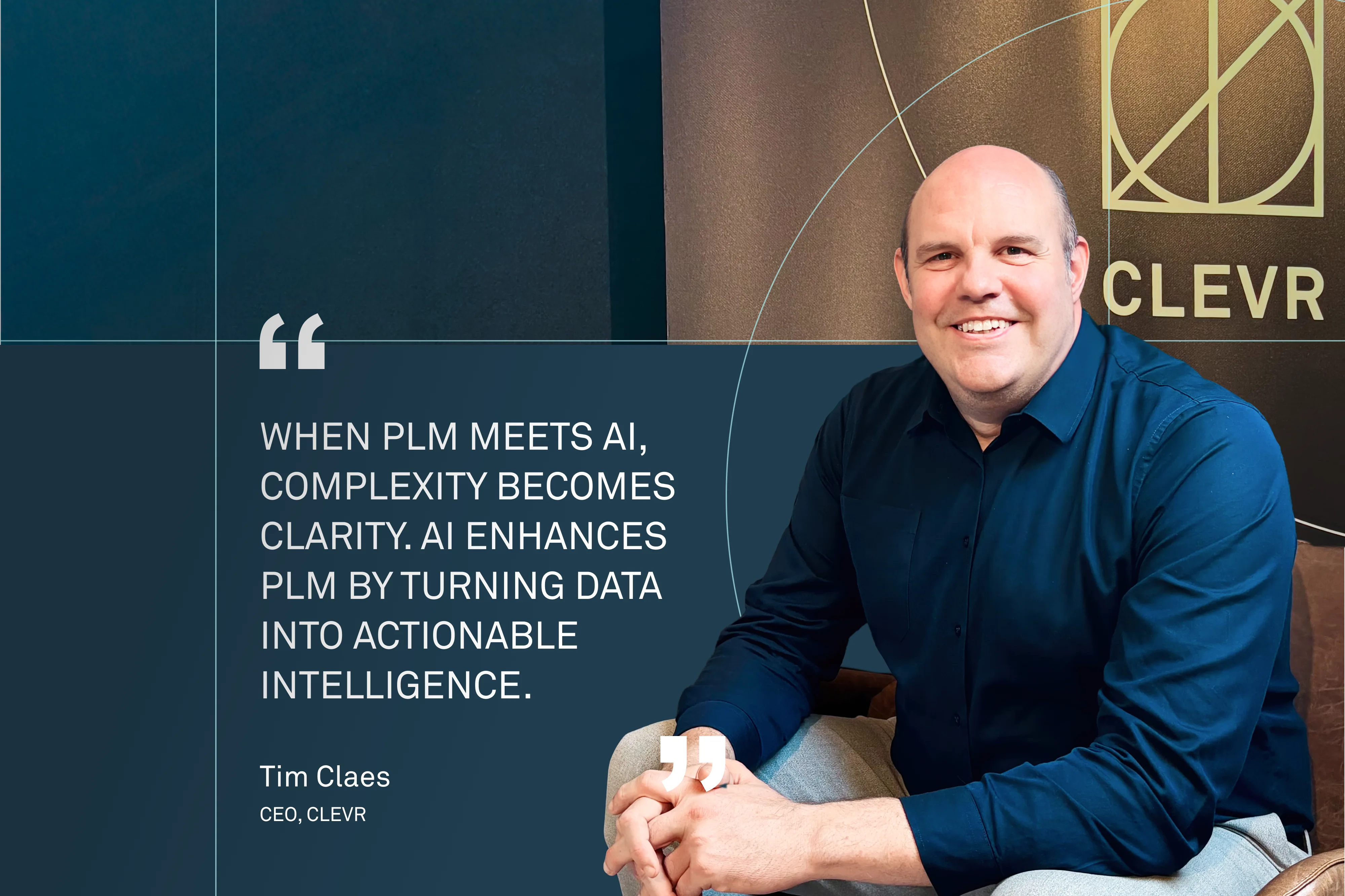
AI in de levenscyclus van producten: waar innovatie en intelligentie samenkomen
In de productiesector wordt AI snel het hulpmiddel dat de punten verbindt tussen ontwerp, productie en onderhoud. Van ontwerpoptimalisatie tot voorspellend onderhoud, AI zorgt voor een revolutie in de levenscyclus van producten door slimmere, efficiëntere processen mogelijk te maken.
Maar om het potentieel van AI te benutten, moet het diep verankerd zijn in het Product Lifecycle Management (PLM) -systeem.
1. PLM: De basis die AI nodig heeft om echte waarde te creëren
PLM fungeert als de centrale gegevensruggengraat voor productgegevens. Of het nu gaat om ontwerp, productie of service na verkoop, PLM is de gegevensdraad die alle fasen van de levenscyclus van een product met elkaar verbindt. Wanneer AI deze rode draad aangrijpt, kan dit de productontwikkeling en het levenscyclusbeheer aanzienlijk verbeteren.
Algoritmen op basis van AI kunnen nu bijvoorbeeld helpen bij het optimaliseren van ontwerpen, waardoor ze lichter, goedkoper en sterker worden, allemaal in één keer. Deze algoritmen evalueren meerdere parameters en bieden nieuwe inzichten en potentiële productinnovaties die voorheen te complex waren om handmatig te berekenen. Het resultaat is een intelligenter, adaptiever ontwerpproces.
2. Digital Twins en generatief ontwerp: waar AI engineering een boost geeft
Een belangrijk gebied waar AI enorme waarde toevoegt, is via digitale tweelingen en generatief ontwerp. Met Digital Twins kunnen fabrikanten producten in realtime simuleren en monitoren, waardoor een digitale replica van een fysiek product ontstaat. AI-modellen gebruiken deze gegevens om problemen te voorspellen en te voorkomen, en ontwerpen te optimaliseren voordat ze zelfs in productie zijn.
Generatief ontwerp, een andere door AI aangedreven innovatie, maakt het mogelijk duizenden ontwerpalternatieven te creëren op basis van specifieke parameters. AI leert voortdurend van de gegevens en verfijnt deze alternatieven om ontwerpen te maken die zowel efficiënt als innovatief zijn en zich aanpassen aan de omstandigheden in de echte wereld.
3. Beyond Design: AI in onderhoud, bedrijfsvoering en duurzaamheid
AI verbetert niet alleen de ontwerpfase. Het verandert ook de manier waarop bedrijven hun producten onderhouden en onderhouden.
Voorspellend onderhoud, mogelijk gemaakt door AI, stelt fabrikanten in staat te voorspellen wanneer een machine of onderdeel zal uitvallen, waardoor uitvaltijd wordt voorkomen en dure reparaties worden beperkt. AI analyseert gegevens van sensoren en identificeert patronen en afwijkingen die wijzen op mogelijke storingen voordat ze zich voordoen. Deze voorspellende aanpak helpt de operationele kosten te verlagen en de levensduur van machines en producten te verlengen.
Bovendien wordt AI steeds meer geïntegreerd in de inspanningen om duurzaamheid en circulariteit te verbeteren. Door de levenscyclus van producten te optimaliseren en het gemakkelijker te maken om afval te meten en te verminderen, biedt AI fabrikanten de tools die ze nodig hebben om te voldoen aan de steeds groeiende eisen op het gebied van duurzaamheid.
4. AI as a Service: een brug slaan tussen de digitale draad en bedrijfsprocessen
AI bestaat niet in een vacuüm. Het moet niet alleen worden geïntegreerd in kernsystemen zoals PLM, maar ook in de bedrijfsprocessen die bepalen hoe een organisatie werkt. AI as a service binnen de IT-architectuur zorgt ervoor dat AI in de hele organisatie kan worden ingezet zonder kernsystemen te verstoren.
De echte kracht van AI wordt gerealiseerd wanneer het een onderdeel wordt van de operationele processen van het bedrijf. Of het nu gaat om de veerkracht van de toeleveringsketen op basis van AI, ontwerpoptimalisatie of realtime onderhoudsvoorspellingen, AI zet inzicht om in actie. Deze integratie zorgt ervoor dat bedrijven niet alleen experimenteren met AI, maar deze ook gebruiken om blijvende waarde te creëren.
AI laten werken: waar architectuur en leiderschap samenkomen
Wanneer AI, PLM en Low Code samenwerken
Door PLM-, AI- en low-code-platforms te combineren, kunnen bedrijven een dynamische, schaalbare architectuur creëren die continue verbetering ondersteunt. AI gaat verder dan alleen het verstrekken van inzichten, het wordt onderdeel van de operationele structuur die zorgt voor snellere, slimmere beslissingen in alle fasen van de levenscyclus van een product.
Net zoals PLM de licentie werd om te innoveren voor productontwerp en -productie, wordt AI de licentie om activiteiten te verbeteren en op te schalen, waardoor bedrijven zowel naar duurzaamheid als naar concurrentievoordeel kunnen streven.
De menselijke factor
Hoewel AI processen slimmer en efficiënter maakt, is het cruciaal om te onthouden dat het menselijke element essentieel blijft. AI ondersteunt menselijke besluitvorming, maar vervangt deze niet. Strategisch leiderschap is vereist om de implementatie van AI te begeleiden en ervoor te zorgen dat deze aansluit bij de algemene visie en doelstellingen van het bedrijf.
AI ondersteunt teams door repetitieve taken te verminderen, de besluitvorming te verbeteren en datagestuurde inzichten te bieden. Maar uiteindelijk zijn het de leiders en de mensen binnen de organisatie die de uiteindelijke beslissingen nemen en het potentieel van AI omzetten in tastbare resultaten.
Van complexiteit naar duidelijkheid
Wanneer PLM en AI samenkomen, wordt complexiteit duidelijkheid. AI ontsluit waarde in elke fase van de levenscyclus van een product, van ontwerp en productie tot onderhoud en duurzaamheid.
Door de volledige kracht van AI te benutten binnen een solide PLM-raamwerk, kunnen bedrijven overstappen van experimenteren naar uitvoering, waardoor waarde op lange termijn wordt gecreëerd en innovatie wordt gestimuleerd.
Oorspronkelijk gepubliceerd hier.

Waarom Excel faalt in de moderne productie en hoe MES dit oplost
Digitale transformatie is niet langer een modewoord. Het gebeurt tegenwoordig in echte fabrieken. Siemens heeft zijn Elektronicabedrijf Amberg in een toonaangevende digitale dubbele vitrine gebruikt Bosch zijn Nexeed Smart Factory platform om het energieverbruik tot 40% te verminderen in fabrieken zoals Homburg, en Gigafabrieken van Tesla herdefiniëren geautomatiseerde, softwaregestuurde productie op grote schaal.
Deze voorbeelden bewijzen dat slimme fabrieken niet alleen visioenen zijn. Het zijn operationele realiteiten die meetbare resultaten opleveren, wat des te opvallender is dat 80% van de fabrikanten blijf vertrouwen op Excel voor productieplanning.
Jarenlang studeert hebben een op spreadsheets gebaseerde planning ontoereikend geacht voor moderne productie, en hebben dit als een van de grootste belemmeringen voor digitale volwassenheid benadrukt. Dus hoewel ze misschien vertrouwd, goedkoop en enigszins flexibel aanvoelen, moeten we ons afvragen of ze echt schaalbaar zijn.
Kunnen spreadsheets verbinding maken met ERP-, PLM- en IIoT-sensoren en voldoen aan de interoperabiliteitsvereisten van de complexe winkelvloeren van vandaag?
Waarom Excel faalt op de moderne werkvloer
1. Verouderde en losgekoppelde gegevens
Realtime zichtbaarheid is nu een basisvereiste voor concurrerende productie, vooral in sectoren met snel evoluerende toeleveringsketens zoals de automobielindustrie en elektronica. Toch kunnen spreadsheets alleen statische momentopnamen opleveren, waardoor productieteams cruciale beslissingen kunnen nemen op basis van de gegevens van gisteren in plaats van op de werkelijke omstandigheden op de werkvloer. Gartner heeft deze kloof rechtstreeks in verband gebracht met tragere responstijden, verkeerde voorraadverschillen en verkeerd afgestemde planningscycli.
Als een cruciaal onderdeel wordt uitgesteld, kunnen productiemanagers in de praktijk niet gemakkelijk orders omleiden naar alternatieve lijnen, en lopen planners het risico componenten door te schuiven die mogelijk al verouderd zijn tegen de tijd dat ze de eindmontage bereiken.
2. Hoge foutenpercentages en versiechaos
94% van de spreadsheets fouten bevatten, een statistiek die sterk weerklinkt op de werkvloer. Vanuit het perspectief van de fabrikant kan zelfs een kleine fout in een formule of een verouderde bestandsversie al snel leiden tot ernstige operationele gevolgen: duizenden onderdelen die volgens de verkeerde specificaties worden geproduceerd, productielijnen die worden stilgelegd voor herbewerking of magazijnen die vollopen met onverkoopbare overtollige voorraad.
In sectoren zoals de automobiel- en ruimtevaart, waar de toleranties beperkt zijn en de toeleveringsketens wereldwijd zijn, verspillen deze door spreadsheets veroorzaakte fouten niet alleen hulpbronnen, maar tasten ze ook het vertrouwen van klanten aan en zetten ze de toch al kleine marges onder druk.
3. Schaalpijn op verschillende locaties
Excel is misschien voldoende voor één enkele fabriek, maar het is snel stort in wanneer operaties zich uitstrekken over meerdere fabrieken of regio's waar coördinatie en synchronisatie van cruciaal belang zijn. IDC-onderzoek benadrukt dat fabrikanten die afhankelijk zijn van grootschalige spreadsheets te maken hebben met aanzienlijk hogere operationele kosten, een kortere time-to-market en een verminderde flexibiliteit van de toeleveringsketen.
Gartner heeft soortgelijke observaties gedaan in zijn MES-onderzoek, waarbij de nadruk werd gelegd op het feit dat spreadsheetgestuurde planning onbeheersbaar wordt zodra de productie wereldwijd wordt uitgebreid, wat onderstreept dat spreadsheetgestuurde planning niet alleen de kosten verhoogt, maar ook het reactievermogen ondermijnt dat nodig is om te voldoen aan de dynamische vraag van klanten op internationale markten.
4. Hiaten in de naleving en traceerbaarheid
In sterk gereguleerde sectoren, zoals de farmaceutische industrie of de lucht- en ruimtevaart, kan het niet volgen van elke batch, partij of geserialiseerd onderdeel resulteren in dure audits, productieonderbrekingen, boetes of zelfs gedwongen terugroepacties. Excel biedt geen betrouwbaar audittraject, waardoor het bijna onmogelijk is om te voldoen aan de strenge eisen van autoriteiten zoals de FDA of EASA.
Organisaties die digitale transformatie omarmen, kunnen de voorbereidingstijd voor audits drastisch verkorten, soms van weken tot dagen, door records te digitaliseren, de traceerbaarheid te automatiseren en kwaliteitscontroles rechtstreeks in hun productieworkflows te integreren. Digitale automatisering maakt het mogelijk om volledige zichtbaarheid van processen te garanderen, betrouwbare audittrajecten te onderhouden en goedkeuringen te versnellen.
5. Onvermogen om aan de eisen van Industrie 4.0 te voldoen
De moderne productie is steeds meer afhankelijk van lotgroottes van één, massa-aanpassing en snelle productwisselingen. Statische spreadsheets kunnen zich niet aanpassen aan dit niveau van variabiliteit en snelheid, waardoor planners niet in staat zijn om planningen of toewijzing van middelen tijdig aan te passen aan de veranderende vraag.
Daarentegen digitaal geautomatiseerde processen maak realtime aanpassingen aan productielijnen mogelijk, of dat nu gaat om het opnieuw configureren van een lijn voor een aangepaste voertuigbestelling, het balanceren van de doorvoer bij de assemblage van elektronica of het versnellen van de lancering van consumptiegoederen. Deze mate van flexibiliteit is een fundamentele concurrentievereiste geworden voor fabrikanten in alle sectoren.
Van spreadsheets tot slimme automatisering: waarom MES de volgende stap is
Fabrikanten hebben meer nodig dan incrementele oplossingen. Ze hebben een stapsgewijze verandering nodig, en dit is waar Manufacturing Execution Systems (MES) van pas komen.
MES-platforms overbrug de kloof tussen de planningslaag (ERP) en de werkvloer door realtime inzicht te bieden, workflows te orkestreren en kwaliteit en naleving in de dagelijkse activiteiten te integreren. Met MES kunnen bedrijven productieschema's op verschillende locaties synchroniseren, live machinegegevens vastleggen en analyseren, zorgen voor volledige traceerbaarheid voor audits en zich snel aanpassen aan de veranderende vraag van klanten — allemaal dingen die Excel nooit kan bereiken.
Onder de beschikbare oplossingen Siemens Opcenter wordt door Gartner en IDC consequent gepositioneerd als leider op het gebied van MES, en wordt door brancheanalisten en praktijkmensen erkend als een van de sterkste aanbiedingen op de markt. Laten we dieper ingaan op hoe bedrijven hun capaciteiten kunnen benutten om hun activiteiten te versterken en concurrerend te blijven.
Siemens Opcenter: MES tot leven brengen
Siemens Opcenter is een uniform portfolio van management van productieactiviteiten (MOM) oplossingen ontworpen om fabrikanten te ondersteunen bij hun digitale transformatie. Het maakt deel uit van het Siemens Xcelerator-portfolio en stelt bedrijven in staat om productie- en kwaliteitsactiviteiten digitaal te plannen, te orkestreren en continu te verbeteren, zodat ze sneller en tegen lagere kosten producten van hogere kwaliteit kunnen maken dan concurrenten.
De belangrijkste troeven van Opcenter liggen in het vermogen om verschillende systemen te verenigen en de cirkel tussen ontwerp en uitvoering te sluiten, waarbij fabrikanten worden ondersteund die continue verbetering nodig hebben door middel van analyses en digital twin-mogelijkheden. Meer specifiek biedt Opcenter:
Realtime gegevensintegratie
Opcenter verenigt de werkvloer- en bedrijfssystemen, waardoor fabrikanten de werkelijke prestaties kunnen controleren, problemen onmiddellijk kunnen detecteren en onmiddellijk kunnen reageren op verstoringen. Deze integratie verbetert de betrouwbaarheid, verhoogt de efficiëntie en zorgt ervoor dat beslissingen gebaseerd zijn op live productiegegevens in plaats van statische rapporten. Een goed voorbeeld is Het bedrijf Absolut, dat Opcenter Execution en APS implementeerde om productielijnen te automatiseren en volledige zichtbaarheid en controle over de activiteiten kreeg.
Voorspellende planning en planning
Met geavanceerde analyses stelt Opcenter bedrijven in staat om activiteiten digitaal te plannen en te orkestreren, de capaciteit te optimaliseren, de downtime te verminderen en de tijdige levering te verhogen. Door gegevens zoals gepland en zoals ze zijn te vergelijken, kunnen planners de planningen voortdurend verfijnen om de productie in lijn te houden met de vraag. Op die manier kan Opcenter fabrikanten een duidelijke voorsprong geven op reactievermogen en gebruik van hulpbronnen, zodat ze de productie snel en nauwkeurig kunnen aanpassen aan veranderingen in de echte wereld.
Naleving en traceerbaarheid
Opcenter automatiseert het bijhouden van gegevens, volgt elk onderdeel en integreert kwaliteitscontroles in workflows. Dit zorgt voor betrouwbare audittrajecten en maakt naleving van de regelgeving een naadloos onderdeel van de dagelijkse activiteiten, waardoor het een cruciaal hulpmiddel is voor bedrijven die actief zijn in sterk gereguleerde omgevingen. Door de kosten in verband met handmatige inspecties en documentatie te verlagen, kunnen bedrijven die Opcenter gebruiken, records automatiseren, volledige traceerbaarheid garanderen en efficiënter voldoen aan wettelijke normen.
Digital twin en integratie met PLM, ERP en automatisering
Opcenter fungeert als de realtime laag die PLM verbindt met automatisering en helpt fabrikanten om ontwerp, planning en uitvoering in één continue lus te koppelen. Deze digital twin-benadering maakt slimmere besluitvorming, snellere innovatiecycli en continue verbetering in een gesloten kringloop gedurende de hele levenscyclus mogelijk, waarbij wordt geactiveerd wat Siemens omschrijft als de uitgebreide Digital Twin.
CLEVR: uw vertrouwde partner in de digitale transformatie van MES
Als vertrouwde partner van Siemens biedt CLEVR meer dan alleen technische implementatievaardigheden. We combineren diepgaande expertise in MES en MOM met jarenlange ervaring in het begeleiden van organisaties in verschillende sectoren bij digitale transformatieprojecten.
Onze rol is niet om simpelweg software te implementeren, maar om ervoor te zorgen dat de MES- en MOM-oplossingen passen bij de manier waarop uw teams daadwerkelijk werken, waarbij technologie wordt afgestemd op bedrijfsdoelstellingen en operationele realiteiten. En in een snel veranderende wereld hebben bedrijven een betrouwbare adviseur nodig die hun sector begrijpt en hen met vertrouwen kan begeleiden bij moedige beslissingen.
Of u nu actief bent in de lucht- en ruimtevaart en defensie, energie en nutsvoorzieningen, of in een andere sector, de overstap naar Opcenter en slimme automatisering is niet langer optioneel. Het is een strategische noodzaak en CLEVR biedt branchespecifieke MES- en MOM-expertise om u te helpen de capaciteiten van Opcenter volledig te benutten om de efficiëntie, kwaliteit en flexibiliteit te verbeteren.
Neem contact met ons op om meer te weten te komen.
Frequently Asked Questions
Which industries does CLEVR serve?
Lorem ipsum dolor sit amet, consectetur adipiscing elit. Suspendisse varius enim in eros elementum tristique. Duis cursus, mi quis viverra ornare, eros dolor interdum nulla, ut commodo diam libero vitae erat. Aenean faucibus nibh et justo cursus id rutrum lorem imperdiet. Nunc ut sem vitae risus tristique posuere.
How does CLEVR support digital transformation?
Lorem ipsum dolor sit amet, consectetur adipiscing elit. Suspendisse varius enim in eros elementum tristique. Duis cursus, mi quis viverra ornare, eros dolor interdum nulla, ut commodo diam libero vitae erat. Aenean faucibus nibh et justo cursus id rutrum lorem imperdiet. Nunc ut sem vitae risus tristique posuere.
What is CLEVR's experience and reach?
Lorem ipsum dolor sit amet, consectetur adipiscing elit. Suspendisse varius enim in eros elementum tristique. Duis cursus, mi quis viverra ornare, eros dolor interdum nulla, ut commodo diam libero vitae erat. Aenean faucibus nibh et justo cursus id rutrum lorem imperdiet. Nunc ut sem vitae risus tristique posuere.
Who are some of CLEVR's notable clients?
Lorem ipsum dolor sit amet, consectetur adipiscing elit. Suspendisse varius enim in eros elementum tristique. Duis cursus, mi quis viverra ornare, eros dolor interdum nulla, ut commodo diam libero vitae erat. Aenean faucibus nibh et justo cursus id rutrum lorem imperdiet. Nunc ut sem vitae risus tristique posuere.

